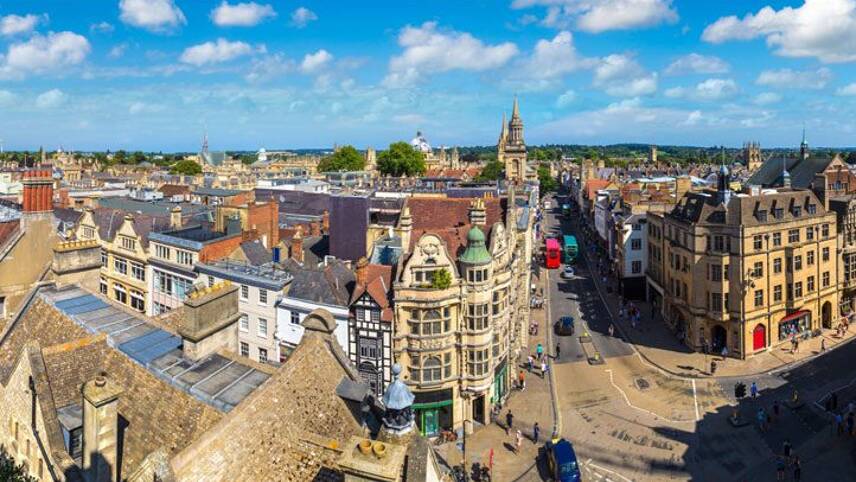Register for free and continue reading
Join our growing army of changemakers and get unlimited access to our premium content

Actions covering emissions from transport
In what it claims is a UK first, members of the Council’s cabinet voted this week to approve an Air Quality Action Plan spanning 2021-2025. The Plan is headlined by a commitment to ensure that levels of NO2 are no higher than 30 micrograms per cubic metre of air (30 µg/m3) by the end of 2025.
Currently, the UK Government’s target is to limit NO2 levels to 40 µg/m3. These limits could be altered via the Environment Bill. Oxford City Council said in a statement that it wanted to go further, as some research has concluded that this is not a safe limit. NO2 has repeatedly been linked to reduced lung function and inflammation of the airways.
Oxford City Council’s Plan details 30 priority actions to be undertaken by the local authority and its partners across the city-region. They are grouped into four key focus areas: developing partnerships and education; supporting low-emission and zero-emission vehicles; reducing emissions from heating, industry and services and supporting sustainable transport systems. This last category covers measures to reduce the need to travel and to promote walking, cycling and public transport.
As in most urban areas, transport is Oxford’s main source of NO2 emissions. A third-party analysis found that 68% of the city’s total annual NOx emissions are attributable to transport, with diesel cars and buses being major contributors.
Oxford City Council is, therefore, implementing a Zero Emission Zone (ZEZ) in tandem with its work to help businesses, households and public transport bodies to either shift mode of transport or invest in low and zero-emission vehicles
The ZEZ’s first phase – a “Red Zone” in Oxford City Centre – will charge drivers of non-Euro-six-compliant vehicles £10 each time they enter between 7am and 7pm, seven days a week. Residents living within its boundaries will benefit from a 90% discount. A broader “Green Zone” will then be developed.
Trials of the Red Zone were due to start last year, but were delayed due to Covid-19. Oxford City Council now plans to begin the pilot this August.
“We all have a right to breathe clean air,” Oxford City Council’s cabinet member for green transport and zero-carbon Oxford Cllr Tom Hayes said.
“However, harmful levels of air pollution are harming people’s health and cutting lives short, with poorer and more disadvantaged people disproportionately affected. Air pollution is, at its heart, a social justice issue.”
Up in the air
In related news, campaign organisation Clean Air in London has this week released data proving that levels of NO2 in many parts of the capital are exceeding legal limits.
During the first national lockdown, levels of NO2 fell by some 40% across London. The new figures prove that this trend is not being repeated as the third lockdown continues.
The highest levels of the pollutant were recorded in Brixton Road, where readings have averaged 58 µg/m3 since the start of the year. Nine other streets and areas were found to be exceeding the 40 µg/m3 limit regularly, including Putney High Street and the entrance to the Dartford Tunnel.
“It is staggering that so many streets in London look set to breach the World Health Organisation guideline and the annual legal limit for nitrogen dioxide again in 2021 despite another lockdown,” Clean Air in London’s founder and director Simon Birkett said.
Sarah George


Please login or Register to leave a comment.